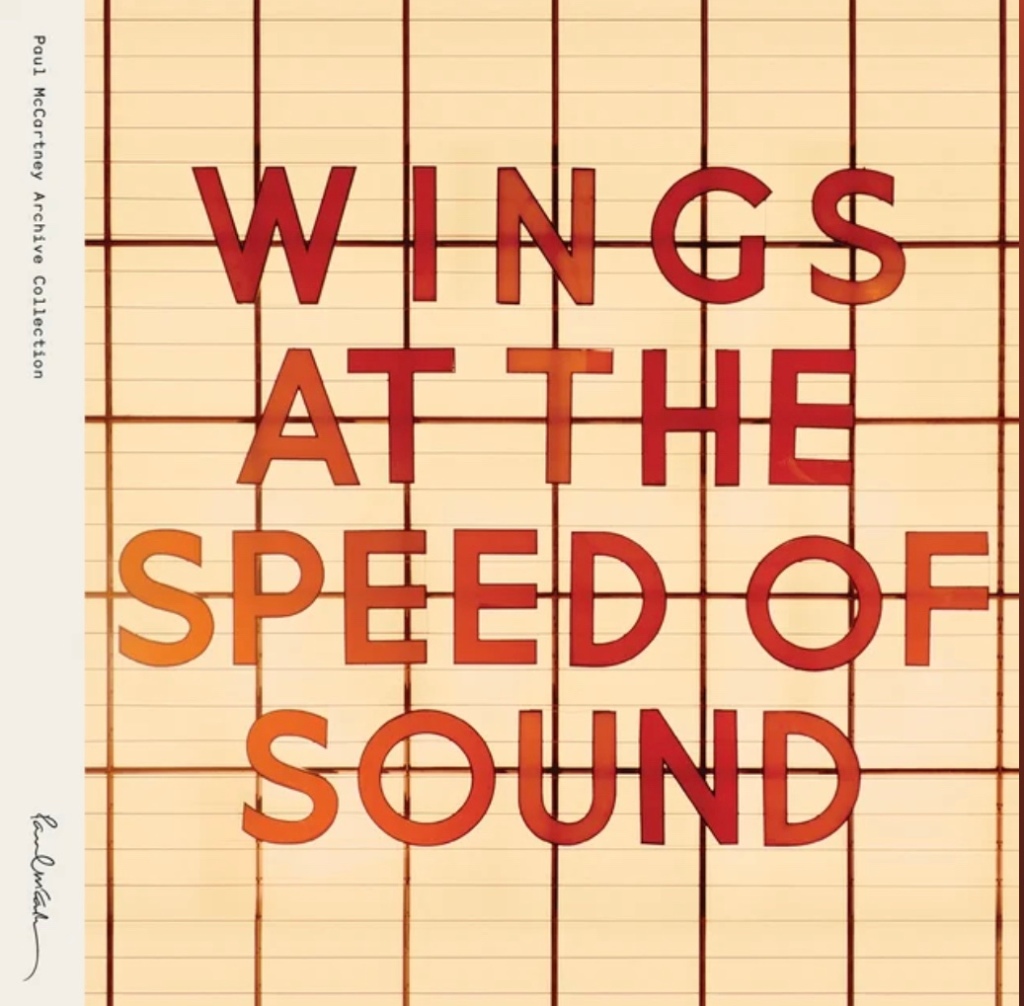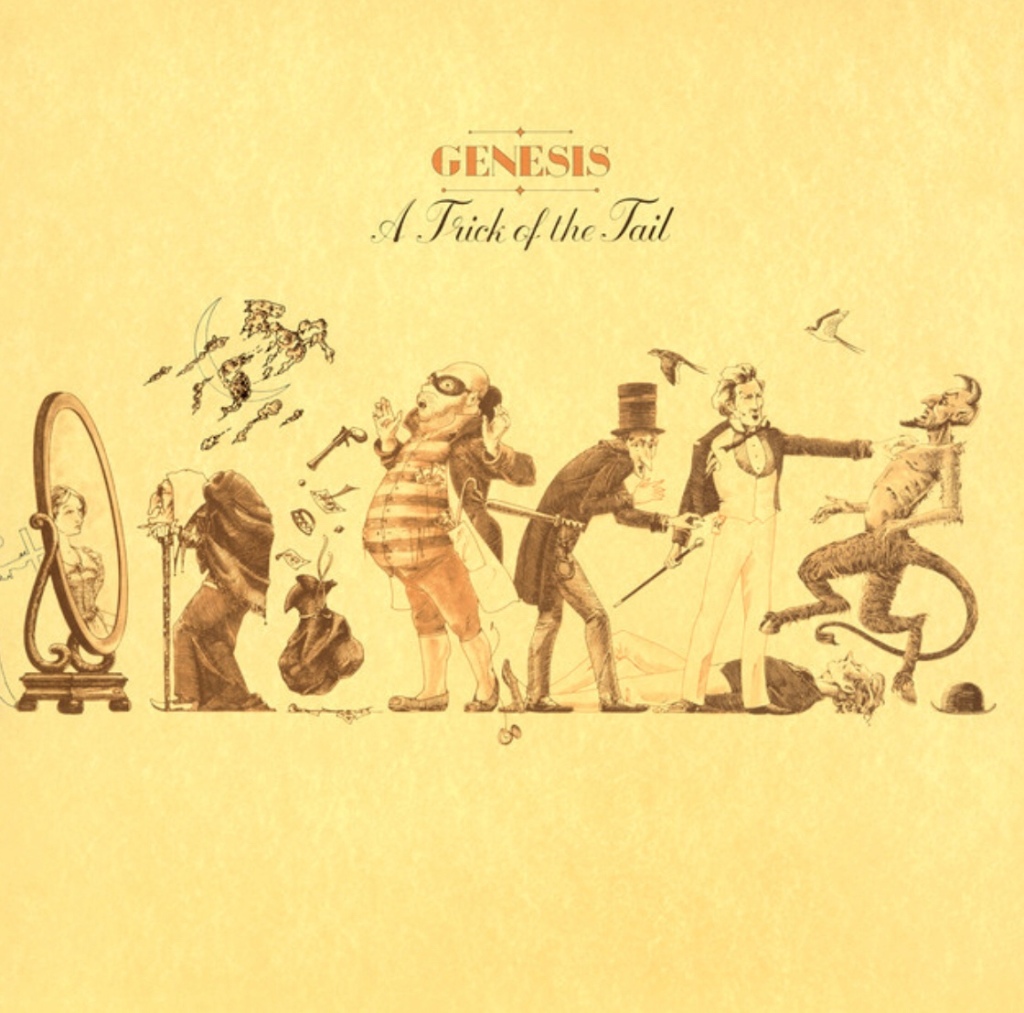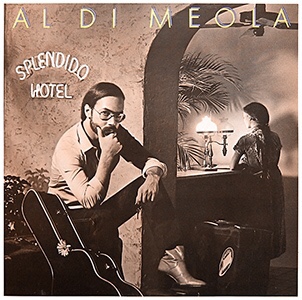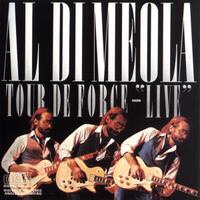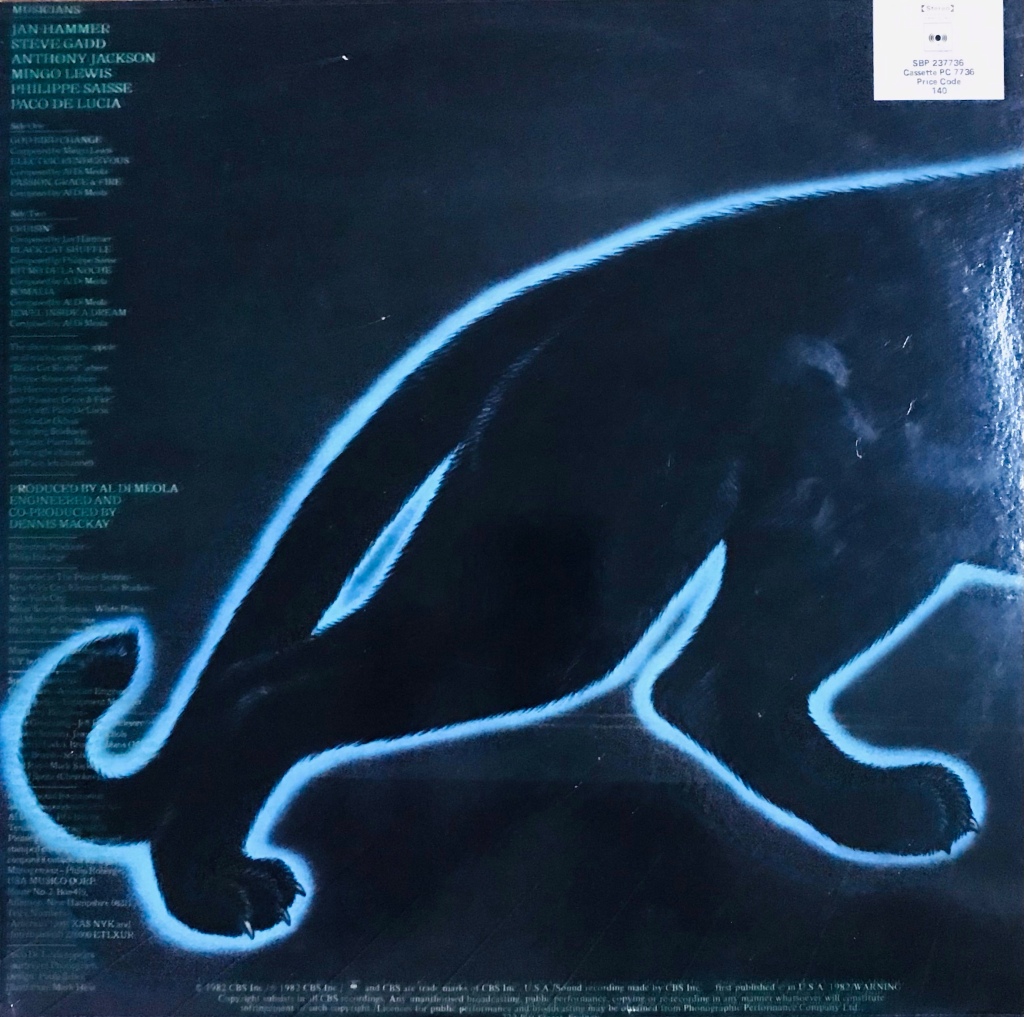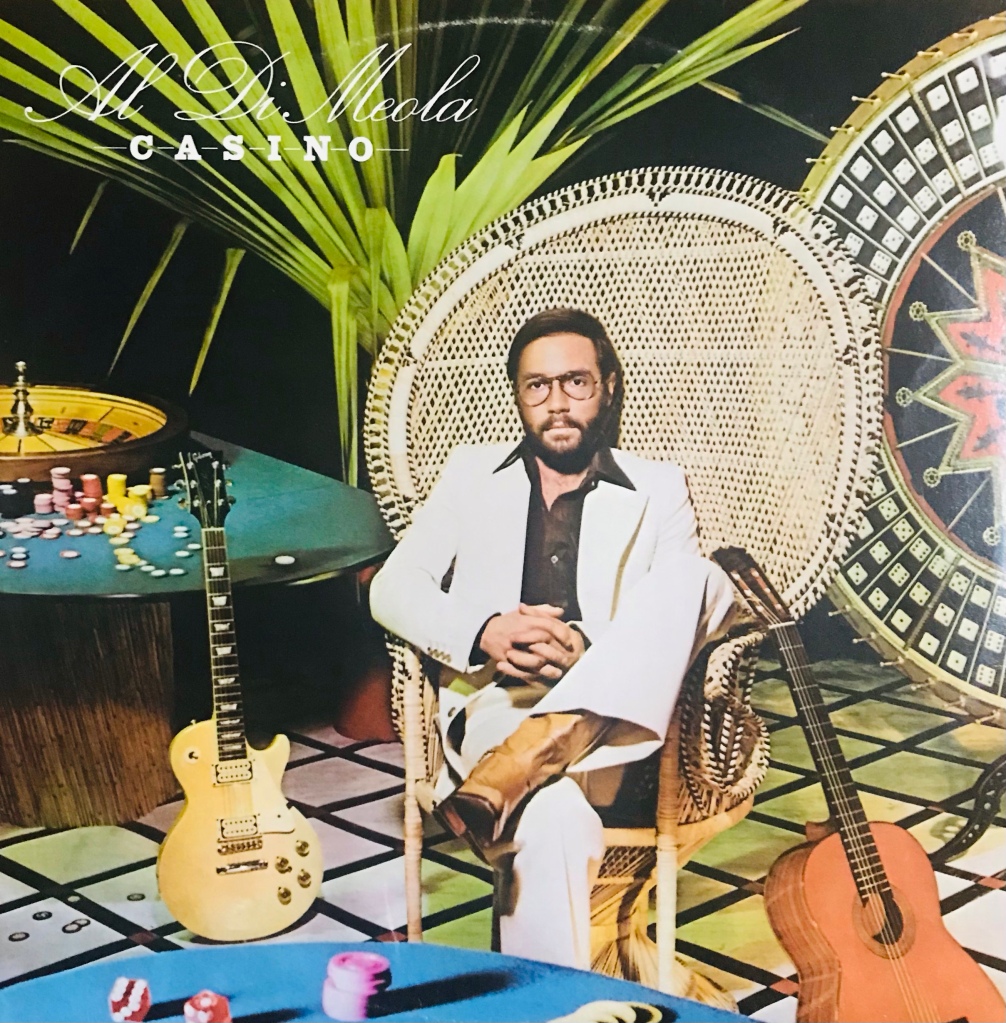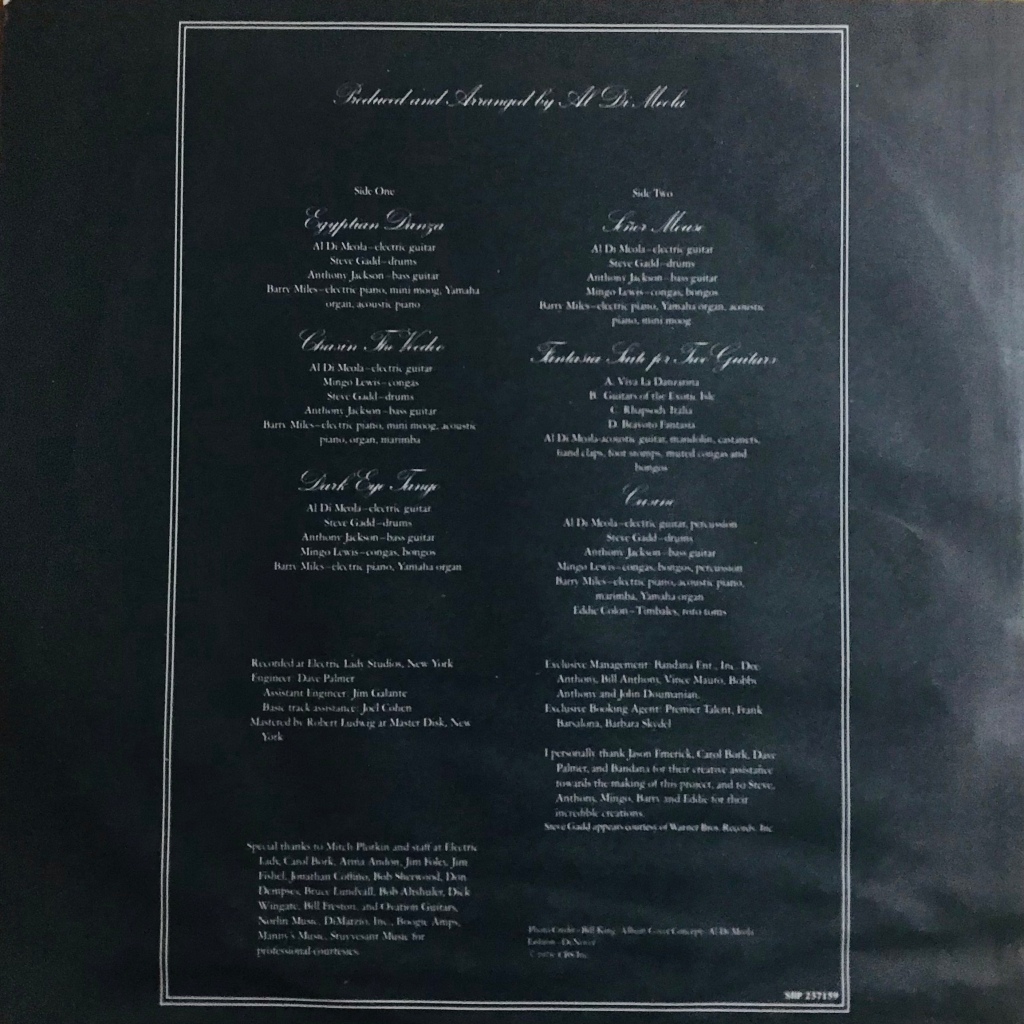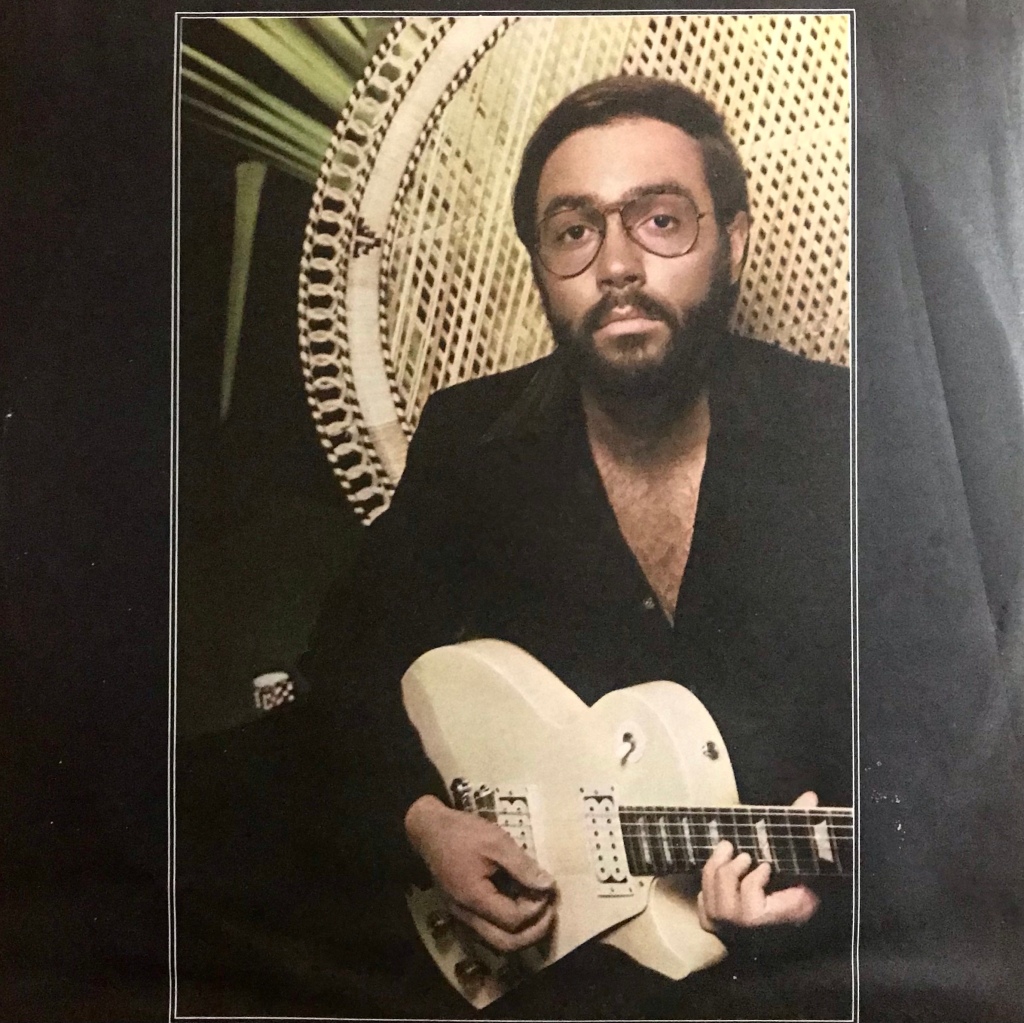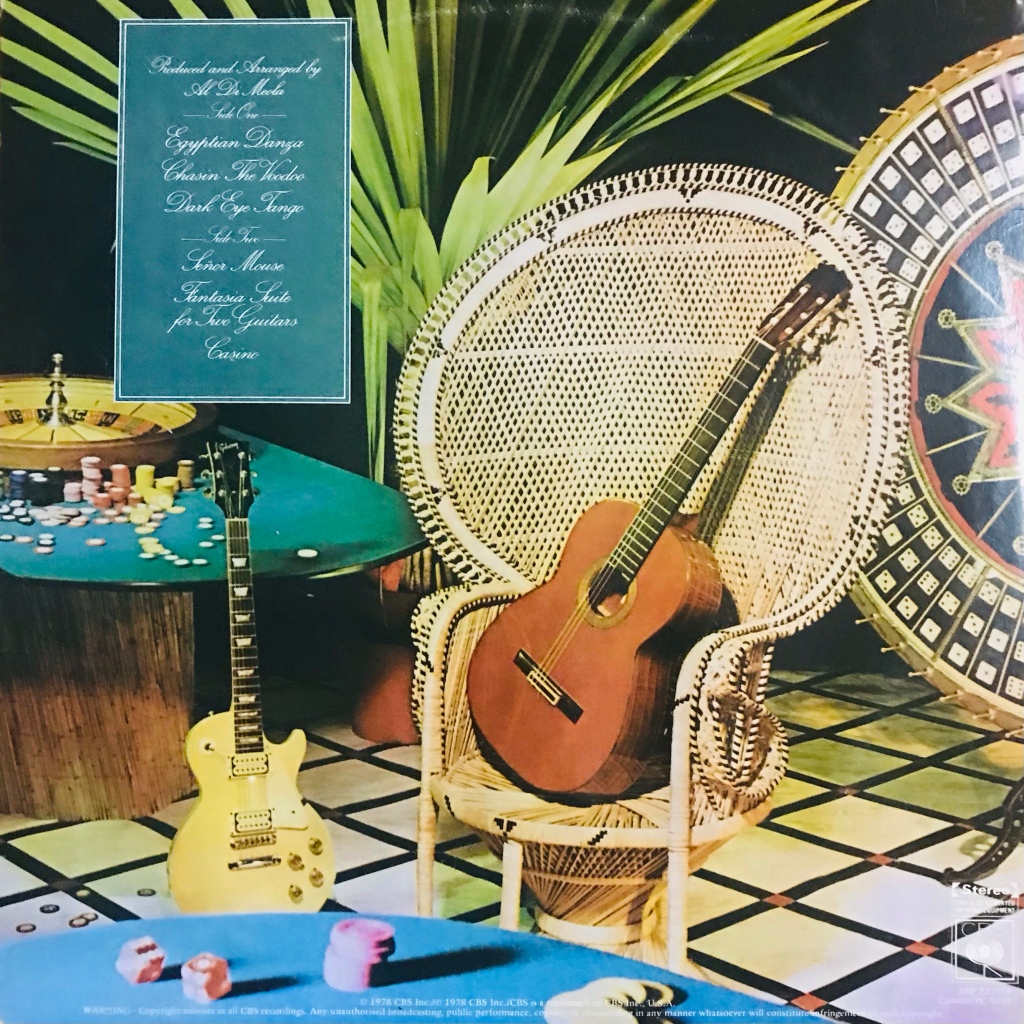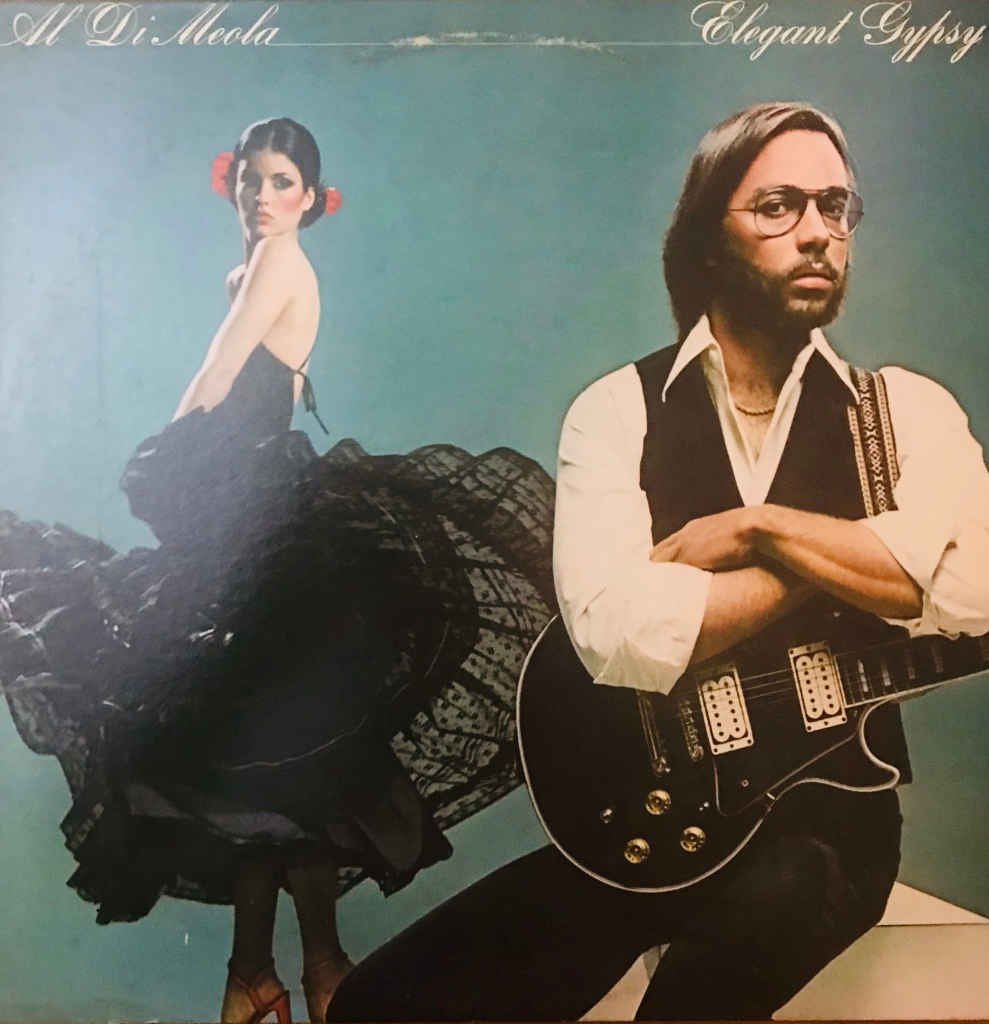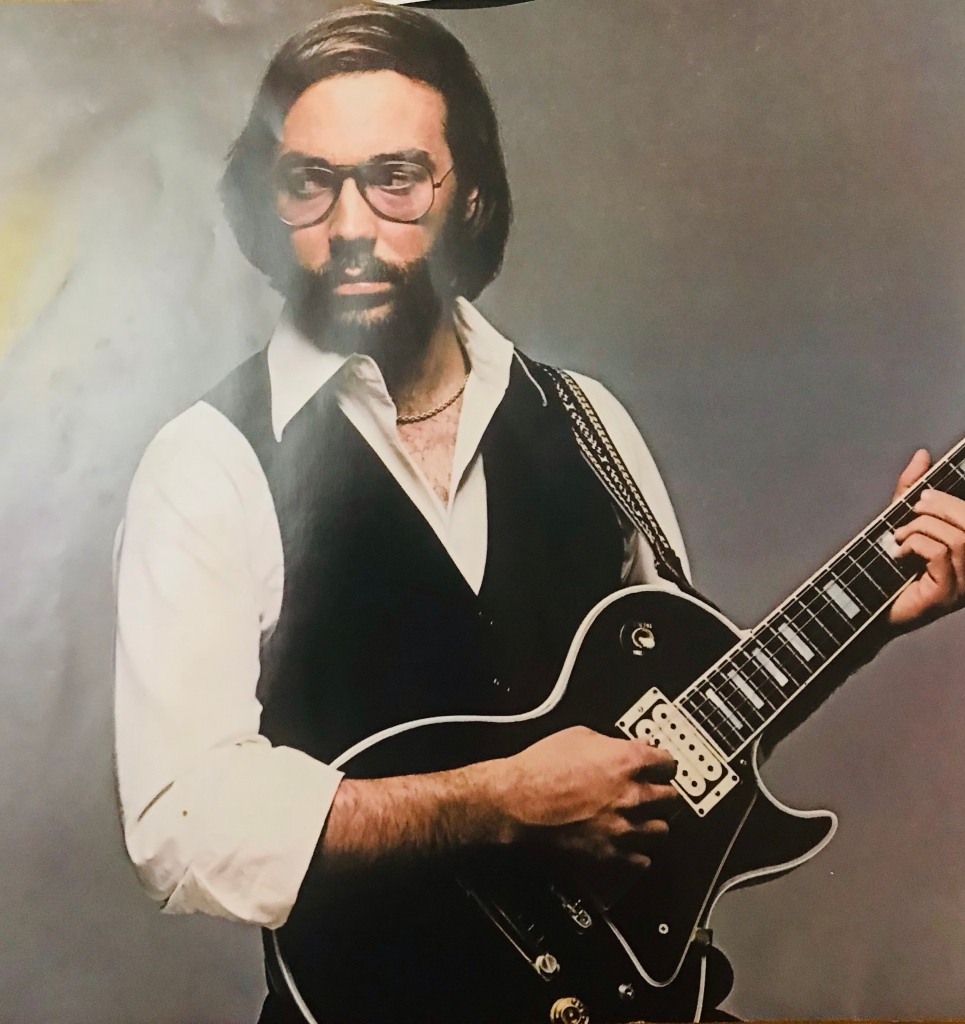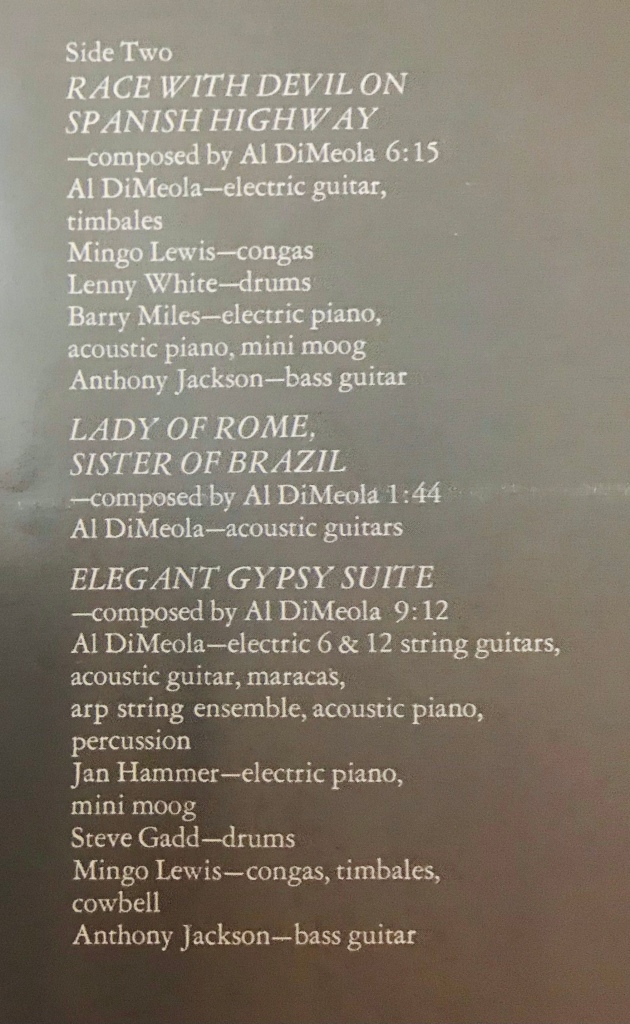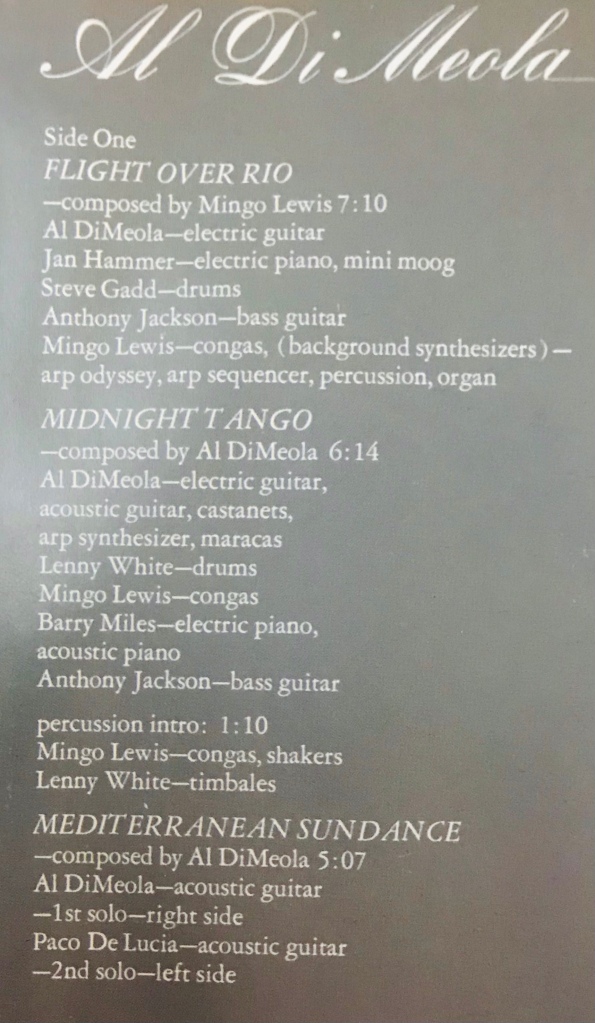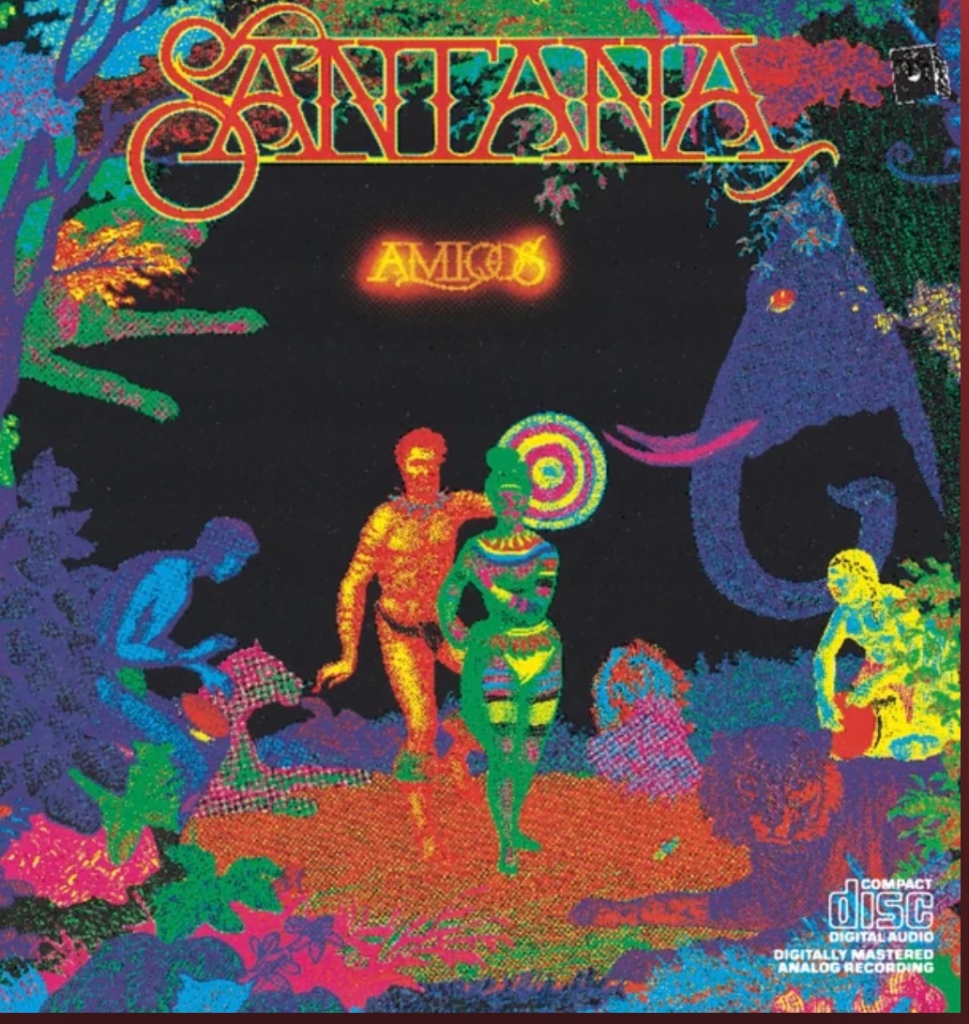
If you got into Santana on the back of “Smooth”, then this album wouldn’t please you a great deal. While “Smooth” contains flamenco style guitar leads and it has that feel, it is basically a pop song written by Rob Thomas from Matchbox Twenty.
Going back a few decades, Santana was a different beast. “Amigos” is the seventh studio album released in 1976.
New vocalist Greg Walker joined the group. It would be the last Santana album to include original bassist David Brown. Rounding out the band with Carlos Santana is also Leon Chancler on drums, Tom Coster on all things keys related and Armando Peraza on congos and bongos.
The brilliant female backing vocals are done by Ivory Stone , Julia Tillman Waters and Maxine Willard Waters.
Dance Sister Dance (Baila Mi Hermana)
Written by pianist Tom Coster along with Leon Chancler and David Rubinson. This song is a vehicle for Santana to solo over while the samba like rhythms play, as the vocals move between English and Spanish.
But the last three minutes from about the 5 minute mark is where it’s at. The change in style reminds me of the second phase of “Layla”.
Take Me with You
It’s an instrumental that borders on jazz samba blues fusion. The song is written by Leon Chancler and Tom Coster, and it provides another vehicle for Santana to solo over.
But it’s a skip for me.
Let Me
A song written by Carlos Santana and Tom Coster. This is what I like when I listen to a Santana album, the fusion of so many different styles. Jazz, rhythm and blues, fast reggae, the samba/latin feel and a whole lotta soul.
However in this case, the vocals don’t help the song at all.
Gitano
Written by Armando Peraza who plays the congas and bongos in the band, who also takes the lead vocal.
I’m always a sucker for an acoustic guitar and that whole flamenco/classical feel. Then at the minute mark it moves away from that and into a song. You know those massive pop hits from Jennifer Lopez and Ricky Martin, well they would have borrowed from this song.
And at 6 minutes long it gets a bit repetitive.
Tell Me Are You Tired
Written by Leon Chancler and Tom Coster.
Yacht music. A total skip for me.
Europa (Earth’s Cry Heaven’s Smile)
An instrumental written by Tom Coster and Carlos Santana.
A massive hit in Europe and the monster track on the album at 60 million Spotify streams. In comparison the other tracks are between 200,000 and 700,000.
Even the U.S hit, “Let It Shine” obviously wasn’t really loved as it is sitting at 296,756 streams on Spotify.
Gary Moore was definitely a fan of this because you can hear “Parisienne Walkways” and eventually his multi-platinum “Still Got The Blues”. You could say they are the same songs.
Let It Shine
Written by bassist David Brown and Ray Gardner.
It’s got this funky bass riff, with a wah like strummed pattern that reminds me of the stuff that Joe Walsh did with The Eagles and in “Life In The Fast Lane”.
The album did go good business in a lot of markets. Then again, certifications in most parts of the world back then happened based on shipment figures and not sales.
If you haven’t heard this album, just press play on “Europa” and then move on.
And that is how it would be for the band. Then from 1992, there was studio silence after the “Milargo” album,.
The best thing Carlos Santana did or what his label and management got him to do, was to work with different vocalists instead of trying to hold down a band. At 30 million plus albums sold worldwide, “Supernatural” from 1999 stands as his testament. And since then, he has tried to replicate the formula.
“Shaman” came in 2002, following the same formula but it didn’t capture the zeitgeist like “Supernatural” only moving 5 million units worldwide. “All That I Am” in 2005 did even less and a sign of the times, with peer to peer downloading and the iTunes store allowing people to cherry pick the songs they want.
But then came a totally unexpected album, and one of Santana’s best. But its forgotten. Called “Guitar heaven: The Greatest Guitar Classics Of All Time”, you will hear Carlos and his friends take on songs like “Photograph” from Def Leppard with Chris Daughtry singing, a hip hop version of “Back In Black” with Nas singing, “Whole Lotta Love” with Chris Cornell singing and other singers like Gavin Rossdale doing “Get it On” from T-Rex, Scott Weiland doing “Can’t You Hear Me Knocking” from The Rolling Stones, Scott Stapp doing “Fortunate Son” from Creedence Clearwater Revival, Jacoby Shaddix doing “Smoke On The Water”, Jonny Lang on “I Ain’t Superstitious” and Chester Bennington on “Riders On The Storm” from The Doors.
But the song to hear on this is “Little Wing” with Joe Cocker on vocals. It’s brilliant and perfect for Santana to express himself.
And in 2012, “Shape Shifter” came out with no guest singers and no sales. In 2014, “Corazon” had the guest singers back for a Latin/Reggae like album and the sales were back.
In 2016, another magical album was released in “Santana IV” which reunited most of the surviving members from the early 1970s line-up of the band (including Carlos Santana, Gregg Rolie, Neal Schon, Mike Carabello and Michael Shrieve) and was the first time that the quintet had recorded together since 1971’s Santana III.
“Africa Speaks” (produced by Rick Rubin) brought about a fusion of rock, Latin and jazz in 2019, and in 2021 the guest musicians and singers were back for “Blessings And Miracles”. Check out “Joy” with Chris Stapleton on vocals, “America For Sale” with Kirk Hammet and Death Angel vocalist Mark Osegueda) and Rob Tomas tried to re-create “Smooth” with “Move”.
